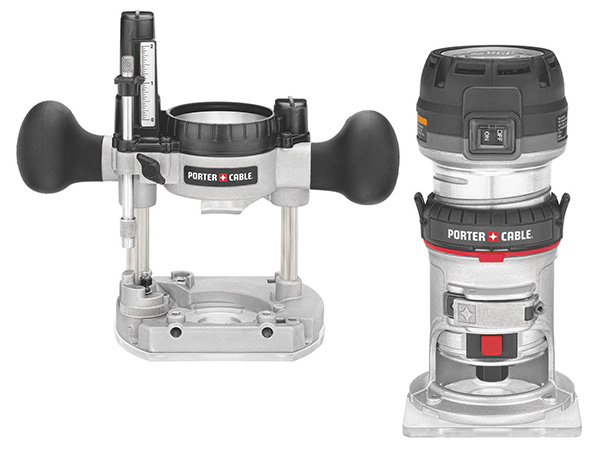
I’ve heard it’s both difficult and dangerous to mount a plunge router in a router table, but that’s exactly what I want to do. Could I get some expert advice? I’m not doing woodworking for a living and just as a hobby and for home repairs.
Ellis Wallentine: You may encounter some minor difficulties, depending on the router model you are using, but I don’t know of any particular dangers inherent in using a plunge router in a router table; I’ve done it for years, with various brands of routers. The main difficulty is the awkwardness of adjusting the height of the bit above the table. If your baseplate insert isn’t screwed down, you won’t be able to simply unlock the plunge lock and manually plunge the bit to the desired height because the plunge springs will push the baseplate right out of the table. You can do it by turning the router’s depth adjustment knob, but the process is annoyingly slow and you have to release the plunge lock on the router before you can turn the knob. Further, not all plunge routers have such knobs, although aftermarket add-ons are available for most routers.
Some people argue that a plunge router isn’t a good choice for a router table because it has too much play in the mechanisms for the most accurate work. I disagree. Modern plunge routers are very sturdily built, and you won’t notice any degrade in performance. The best reason to use a plunge router in a table is because you can only afford one router and a big plunge router is it. If you can afford two routers, I suggest using a fixed-base router in your router table and reserving the plunge router for those jobs where the plunge feature is actually useful, as in dadoing and mortising operations or when using patterns and template bushings.
If you don’t plan to do any extremely heavy-duty routing, such as panel raising with one of those 3″ diameter horizontal cutters, a good compromise for you might be to get one of the combination kits, such as those made by DeWalt and Porter-Cable, that include one medium-duty router motor and two bases – a fixed base and a plunge base. You can keep the fixed base installed in your router table all the time, so it’s always a quick operation to convert from handheld to table use.
Michael Dresdner: I don’t feel it is either difficult or dangerous, and almost everyone I know has at least one of their routers mounted in a table (myself included). In fact, several companies (including Porter-Cable and Bosch) sell kits with one router and two bases — a fixed base to mount permanently in the table, and a plunge base for handheld work. There are also many pre-drilled mounting table plates to attach the router, which makes the whole job downright simple. You’ll find some at www.rockler.com. While you are there, look at the accessories that allow you to adjust the height of the router without removing it from the table.
If the router will stay mounted in the table, and not be removed for plunge work, consider removing the springs from the plunge mechanism. They are there to counteract gravity when the router is right-side-up, but will work against you when it is upside-down, as it will be in the table.
Lee Grindinger: Go ahead and mount it in your table. Make sure your depths are well locked when you set the thing up. Not everyone can afford a dedicated router for a table, so it’s common to use the same router for both handheld operations and table work. As always, just be very cautious as you use it.







